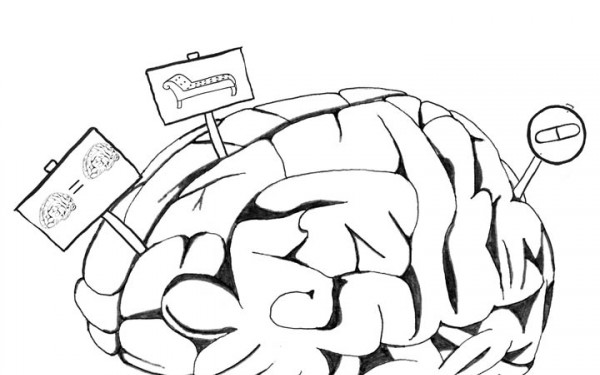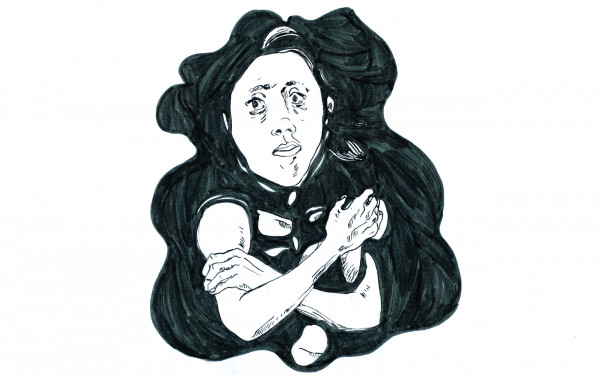Mental Squeeze
Through the Eyes of Caregivers: Play Helps Clear the Fog Around Mental Illness
“Give me money or I’ll burn down your house,” said a young homeless man banging at the back door of a woman’s home.
The woman called the police and soon, the profoundly mentally ill man was arrested and committed to a psychiatric hospital. The man is the woman’s own son.
This may have been a dramatization, but is nonetheless a powerful hypothetical of what it’s like for real people dealing with family members or loved ones struggling with mental illness, and one that a recent play attempted to capture.
Through the Eyes of Caregivers: An Ethnodrama on Mental Illness in the Family was performed by the Centre for Arts in Human Development at Concordia along with the Action on Mental Illness Quebec Nov. 20 to 22. The play, an integration of theatre and health education, was presented at the Drama Therapy Studio of Concordia and proved to be a powerful way to bring real life problems home to wider audiences.
“So how is mental illness normally portrayed in the media?” asked narrator, writer and director Stephen Snow to start off the play. “Funny farm, crazy, screwball, psycho…” As he continued to recite the need for a greater understanding of mental illness, his point was clear: we need to demolish taboos.
The play chronicled mental illness through the experiences of those near and dear to the sufferers, and was based on interviews with over 20 caregivers. For those of us who know someone coping with mental illness, many parts hit home. The statistics demonstrate that the number of people affected is a more significant slice of the population than we might imagine.
One in five people will experience mental illness in their lifetime, according to the Canadian Mental Health Association. That’s enough to ensure that almost everyone will be affected, either as someone who is diagnosed personally, or as a family member, friend, colleague or partner to one of those people.
However, the way society views mental illness is hardly preparing us for the reality of such high numbers. Along with the negative portrayal of mental illness in the media, some fairly scornful public attitudes persist.
People dealing with all stages of mental illness are still affected by stigma, says Francine Waters of Action on Mental Illness Quebec. AMI is an organization created to fill the gaping holes in services available to families seeking support and help for their loved ones. They provide counselling, support groups and other services. As part of its advocacy campaign, AMI also provides education programs in schools in the hope of dispelling the taboos at a young age.
“This is the type of stigma that used to be attached to cancer,” Waters said. “So we have hope that we can also overcome the stigma of mental health problems in our society someday.”
Through the drama of the play, we saw the stubborn obstacle of mental illness taboo for what it is. One scene depicted friends gossiping, until the discussion ended abruptly when one woman told her friends about her son’s schizophrenia diagnosis. In this depiction, mental illness was an efficient lead balloon in conversation.
Many of the people who need vital mental health services will not receive them or even seek them out.
The overriding theme was that ignorance is an affliction curable with education. Better public awareness could benefit family members, teachers and law enforcement officers in contact with those exhibiting signs of mental illness. As things are, uneducated contact and ignoring early signs can have devastating consequences.
“He’s okay now,” said Emile, a character in the play, speaking about his brother being beaten by police. “He finished his education, got married and has a wonderful daughter. But it could have ended up very differently,” he added. Off stage, the sad reality is that it often does. Narrator Snow pointed out that even if mental illness is nothing like it is portrayed in the movies, “sometimes really bad stuff happens.”
The tragic case of pilot Andreas Lubitz flying his plane into a mountain killing his 150 passengers in the Alps was brought up as an extreme example of someone who slipped through the cracks. Lubitz suffered from severe depression. More common are cases of suicides, one leading cause of death among 15- to 24-year-olds.
Many of the people who need vital mental health services will not receive them or even seek them out.
“That’s another effect of how the lasting stigma and discrimination present barriers to diagnosis, treatment and acceptance,” Snow said.
A stark moment in the drama presentation was the depiction of how the stress from dealing with mental illness in a family member is serious enough to bring on mental illness symptoms in other family members.
“What you have to do is take care of yourself as a carer,” Waters said. “But that would include getting the support that you need.”
The evening ended with a touching vignette about a woman who used to tell thoughtless jokes about the mentally ill. She was forced to look more closely at her own attitudes when it entered her home through the jeopardized mental health of her own son.
Perhaps dramatizations like this play will help us find other ways to learn about mental health issues in the future, before we are forced to confront them through real tragedies in our personal experiences.





